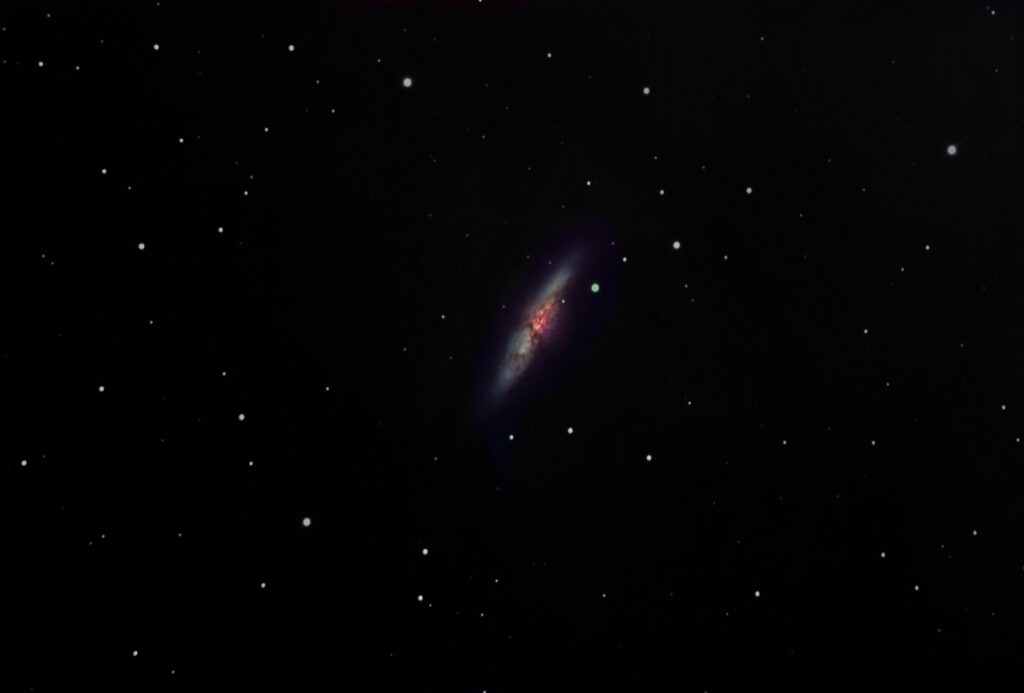M82 is an irregular "starburst" galaxy in Ursa Major, forming a close pair with Bode's Galaxy (M81).
A starburst galaxy is one in which rapid and explosive star formation is occurring on a massive scale, probably due to a close encounter with another galaxy. Such an encounter would send gravitational shock waves resonating through the smaller galaxy, and these waves would shove and compress huge masses of hydrogen gas. As the gas is compressed, it would coalesce into clumps. The clumps would collapse further due to gravity, creating enormous temperatures (due to gravitational contraction) that would trigger nuclear fusion reactions and give birth to a new star. Many of these stars would be giants, with a relatively short life ending in a cataclysmic supernova explosion, and these explosions would in turn create additional gravitational shock waves leading to additional star formation in a "chain reaction." The whole process occurs "quickly" (by astronomical standards), giving rise to the name "starburst" galaxy.
In M82, this phenomenon was almost certainly caused by a close encounter with the neighboring galaxy M81 (Bode's Galaxy). The starburst activity is causing major disturbances in M82 as is clearly seen by the chaotic structure of the galaxy.
In a telescope, M82 and M81 can be seen in the same field of view, and form the most spectacular galaxy pair in the northern hemisphere.
Starburst Galaxy M82
Date Taken:May 21, 2009
Location Taken: Conditions of Location:FWHM 1.9
Equipment Used:14.5" Ritchey-Chretien telescope, SBIG STL11000 CCD camera, Astrodon RGB filters, TCC, PIR.
Processing Used:10 x 300 seconds luminance, 8 x 300 seconds RGB, guided, 1x1 binning, processed in Maxim DL and Photoshop (total exposure 2 hours 50 minutes).
Distance from Location:12 million light years
Constellation:Ursa Major (the "large bear")
Other Link:
